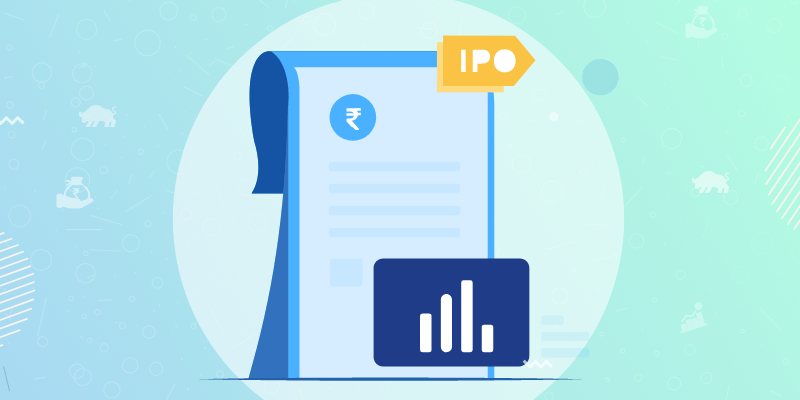How does an IPO work ?3 min read
An Initial Public Offering is the process by which a privately owned company can go public. The company going public can enlist themselves on the stock exchange and raise funds via IPO for capital expenditure, debt repayment and to give exit way to their anchor investors. It not only aids the business financially but also helps in enhancing the brand’s market visibility.
Through IPOs private companies can raise equity capital by issuing new shares to the public and an opportunity for retail as well as institutional investors to participate in the offering and become a shareholder of the company. The capital raised is then utilized by the company for growth and expansion whereas the investors may reap profit from their shareholding.
Advantages of an IPO for a Corporate
Apart from the key objective of an IPO of raising capital, it also bears some other advantages –
1. Companies can get capital at a lower cost
2. It aids in future acquisition deals.
3. It propels the businesses’ public image and reputation, which can elevate sales and profits.
4. It provides convenience in raising additional funds via secondary offerings as the public market is already accessible
5. It helps in luring better management and proficient employees through liquid stock equity participation like ESOPs – a strategy used by many companies to compensate their employees.
How does the IPO process work
An IPO goes through the following steps from inception to allocation
1. To complete the entire process of conversion of a private company into a successful public company, the business needs a team of merchant bankers, financial accountants, auditors and lawyers for the purpose of getting assistance in the entire IPO filing and execution process.
2. This team plays a significant role in dealing with the norms prescribed by SEBI – Securities and Exchange Board of India, a body that regulates the overall process of investment via an IPO in India. The registration process contains multiple aspects like outstanding litigation, capital structure, financial statements, business summary, reasons to go public, plans on funding utilization, etc.
3. SEBI reviews all the details noted in the registration document with close observation and takes a call on the eligibility of the IPO. Either SEBI approves the document if everything is mentioned with the stipulated requirement or it requests additional details if required.
4. As part of the IPO process, the company then files the Draft Red Herring Prospectus (DRHP), a public document that contains information like the size of the IPO, number of shares offered to the public, reasons for the IPO along with fund utilization plan, complete financial statements, business description including the expenditure, revenue model details, risks involved in business and management’s view on their business prospects, etc.
5. Once the DRHP is filed, the company sets the price band with which they would like to go public. It is one of the most critical steps in the entire process as this can sink or swim the deal.
6. The company officially opens the window and makes the shares available to the public. Thereafter investors submit IPO applications showing their interest in buying the shares. Once the subscription window closes, the company allocates the shares to the investors.
7. The last phase of the process involves listing it on the stock exchange. Once the shares are issued to the public in the primary market, they are eligible to be traded on a daily basis in the secondary market.
The Bottom Line
There are many parameters that come into play before a business goes public. The company needs to ensure that the industry ecosystem is favourable to the IPO launch and the overall growth of the company is positive. Additionally, the timing of the launch is crucial and overlap with other IPO releases is largely avoided.




